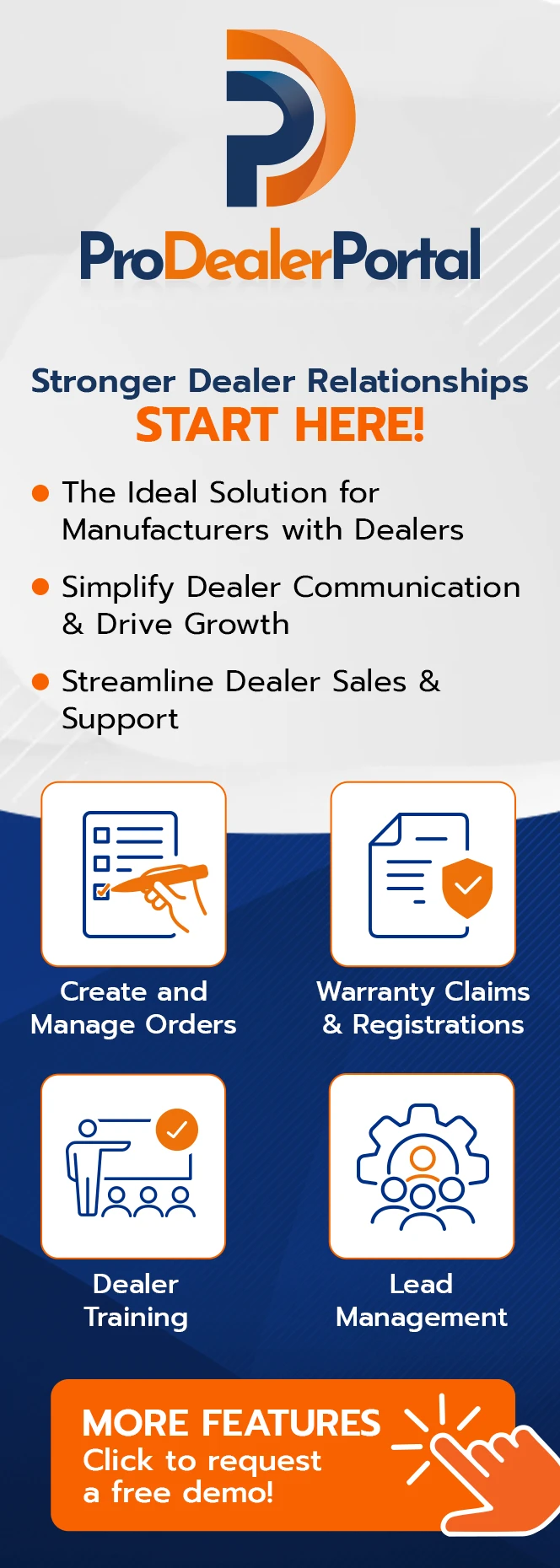5 B2B Ecommerce Website Design Features That Drive Conversions

If you’re running an ecommerce business and you’re targeting businesses as customers (commonly referred to as B2B or wholesale), you already know how important it is that clients have an easy time using your site, plus you want to keep conversions high.
Your site doesn’t have to be flashy. Or fun. Your clients are busy people; they already know what they want, and what they’re likely doing is comparing what you have to offer to the competition, at the same time. And to be fair, that’s fair. And even if your prices and products are the best out there, you won’t convert any of those businesses if your B2B ecommerce website design doesn’t make things easy for them. They’ll just get frustrated, move on, and they won’t look back.
So, a good-looking site simply won’t do. In B2B commerce, ‘good design’ means the customer is getting the product they want with the least amount of steps/time possible. In other words, swift search and product pages that answer all questions before they’ve even been asked.
But as we said, above all, your site needs to convert, not just get traffic. You want quotes, calls, and orders, and if you keep reading, you’ll see how.
What Makes B2B E-commerce Website Design Unique
B2B website design doesn’t work the same as B2C, and that mostly comes down to how people buy. In B2B, you’re not selling to someone who’s scrolling on their phone late at night. You’re dealing with teams, budgets, approval chains, and longer processes of making decisions. One person might be researching, another could be comparing suppliers, and someone else places the final order. All of this changes how your site needs to work.
The design focus should be on clarity, structure, and speed. Buyers need to find what they’re looking for fast. They need to know what they’re getting and trust that your company can deliver. If your site looks great but doesn’t show product specs or makes it hard to request a quote, or talk to a sales agent, then the site is working against you and is hurting your business.
Design should be functional first, visual second.
What Helps Convert B2B Visitors Into Paying Customers
It’s one thing to get someone to visit your B2B site and a whole other thing to get them to take action, especially the action that counts most – conversion. B2B buyers aren’t browsing because they’re trying to kill time – they’re on a mission, they already know why they’re here and what they want, but they still haven’t found what they’re looking for; which is why design is so important.
Before we dive in-depth into it, we’ll give you a quick glance at the B2B ecommerce website design features we’re going to cover:
| Feature | What | Why | How |
| Smart search + Filtering | Users can quickly locate specific products | Reduces buyer decision time | Implement predictive search with filters and mapping |
| Personalized Account Areas | Customer-specific pricing, order history, saved items | Streamlines repeat orders, plus adds upselling opportunities | Install dynamic dashboards with APIs connected to CRM/ERP |
| Contextual Content | Helps in decision-making with guides, use cases, and insights | Reduces buyers’ uncertainty by validating products | Interlink to educational/review content directly from product pages. |
| Reordering Tools | One-click reorders and/or bulk uploads | Conversion for repeat/returning customers | Implement reorder shortcuts, CSV upload, saved carts |
| Clear CTAs | Prompts user towards conversion | Helps avoid abandonment due to unclear next steps, or due to lack of conviction | Use persistent, visually distinct CTAs across all product pages |
Here are 5 features that consistently turn visitors into customers.
- Smart Search and Filtering
When someone who already knows what they want visits your site, the last thing you want to do is slow them down. A strong on-site search system will get them straight to the product. Filters that adjust by category, technical spec, or availability can cut browsing time in half.
If a buyer can’t quickly narrow thousands of SKUs to the exact item they want, they’ll leave and spend their money elsewhere. Speed is very important, and smart search makes all the difference.
- Personalized Account Areas
B2B buyers usually have a history with your business, and that should be reflected the second they log in. A well-built account area shows custom prices, saved orders, past invoices, and open quotes all in one place. They should never have to dig through old emails or call a sales rep.
Also, the ideal dashboards will support bulk reorders and negotiated pricing, making the whole process smoother/faster.
- Content That Supports the ‘Buying Process’
B2B buyers often want more than just product specs and images – they want context, use cases, and proof that what you’re selling really fits their needs. That’s where content comes in. Articles, guides, FAQs, and industry insights can help answer questions that product pages alone don’t cover.
The trick is making that content discoverable and connected to the right pages, which can be done by linking a relevant guide from a product page or even by inserting a backlink into existing articles with added context. Regardless of the strategy/approach, you need to know exactly what you‘re doing to make it work. This is why it’s advised to hire a reputable agency to increase your brand’s visibility while you focus on how to turn those incoming eyes into paying customers.
- Fast Reordering Tools
Repeat business is common in B2B, so your site needs to make it ridiculously easy to reorder. Returning buyers shouldn’t have to search for the same products over and over, so give them reorder buttons, the ability to upload order lists, or quick access to past purchases.
These tools should be easy to find, easy to use, and require as few steps as possible. The faster someone checks out, the more likely they’ll become a return customer.
- Clear Call to Action (CTA)
When it comes to B2B purchases, CTAs need more than just ‘Add to cart’. Your site needs more sophisticated and precise CTAs such as ‘Request a Quote’, ‘Talk to Sales’, or ‘Download Specs’. And these should be visible, well-placed, and not buried at the bottom of a long page, where they won’t be seen.
Good CTAs guide the buyers through the buying process and make the next step super obvious.
Conclusion
Buyers don’t have the patience to dig around or call someone just to reorder or check the pricing, and your site should be designed in a way to accommodate that. None of these 5 features is a bonus, they’re what separates the sites that convert from those that don’t.
You don’t need flashy, you need functional and fast. Build the website around what buyers actually need and watch the conversions happen.
